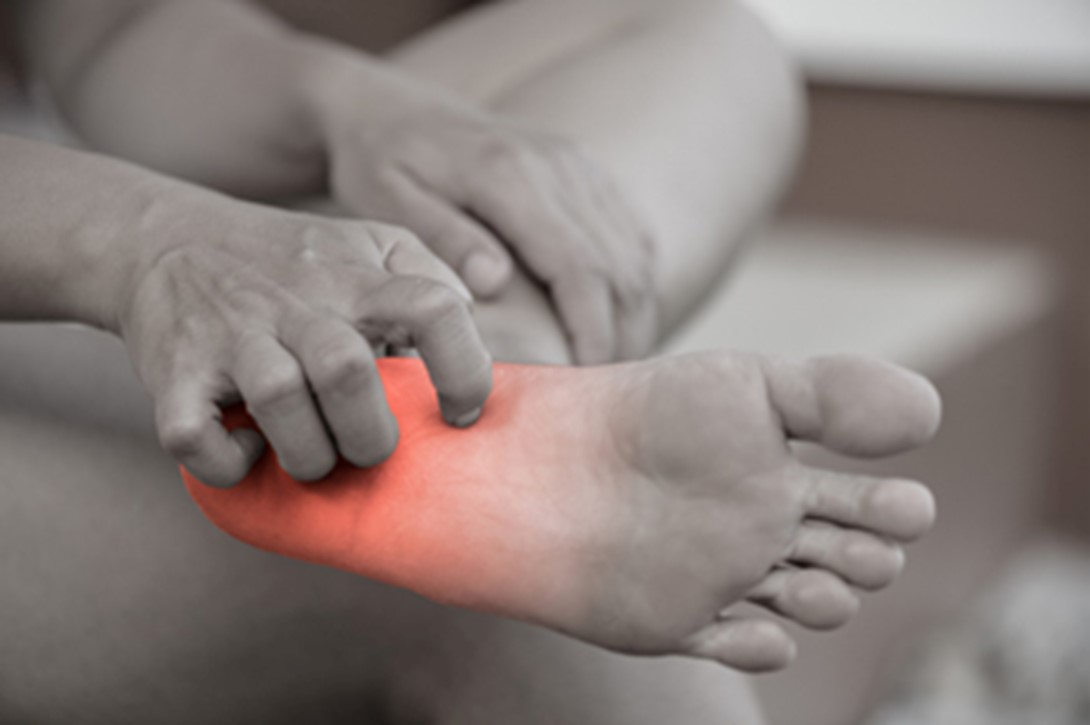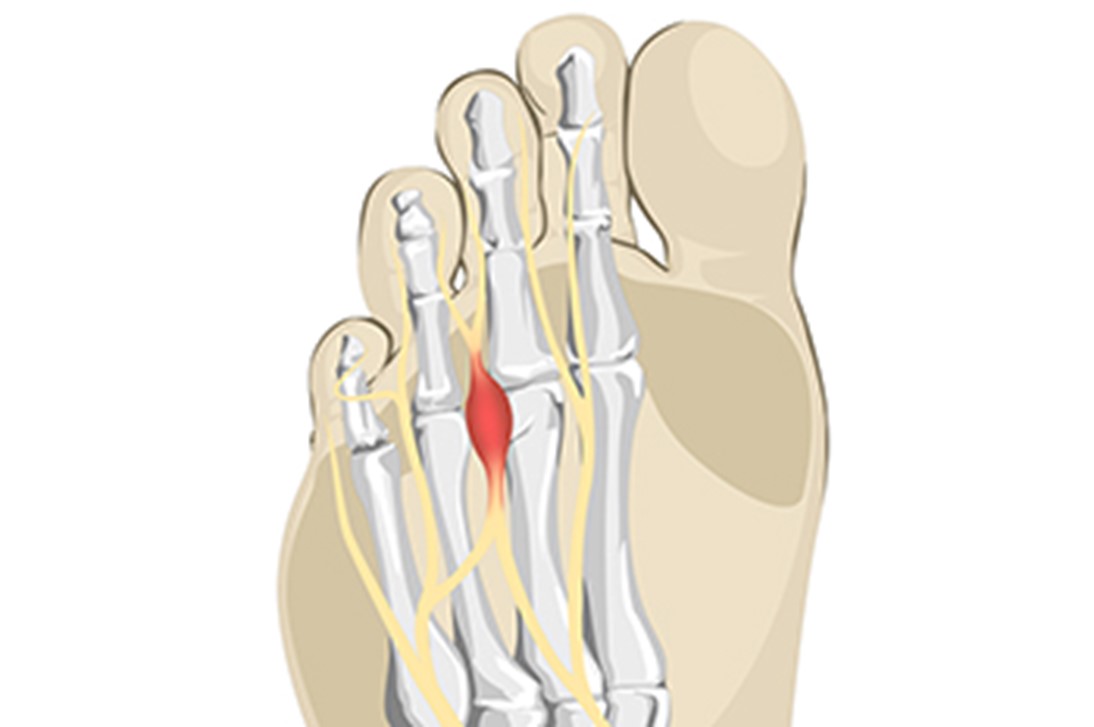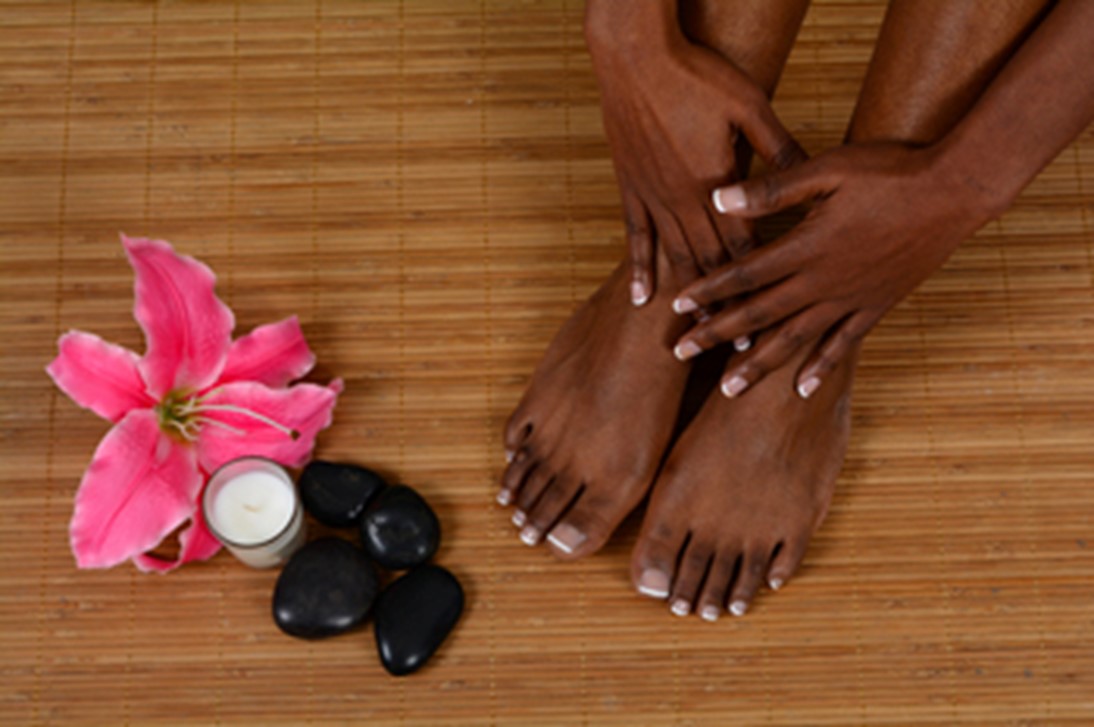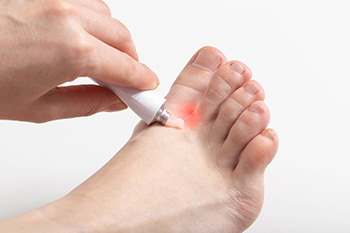Connect With Us
vendor
Managing Foot Pain During Pregnancy
 Pregnancy, with its myriad changes, often brings about discomfort, and foot pain is a common concern for many expectant mothers. Fortunately, several strategies can help alleviate this discomfort. Opting for comfortable, supportive footwear is vital, as the body undergoes weight changes that can impact foot structure. Regularly elevating the feet, especially after extended periods of standing, can help to reduce swelling and promote better circulation. Gentle stretching exercises, such as ankle circles and toe flexes, can offer relief and maintain flexibility. Adequate hydration is essential to prevent water retention, a common contributor to foot swelling. Cold compresses or foot massages may provide soothing relief while maintaining a healthy weight. Engaging in low-impact exercises, like swimming, can alleviate pressure on the feet. Regular prenatal checkups ensure any underlying conditions that contribute to foot pain are addressed promptly. If you are experiencing foot pain during your pregnancy, it is suggested that you confer with a podiatrist who can offer you effective relief techniques.
Pregnancy, with its myriad changes, often brings about discomfort, and foot pain is a common concern for many expectant mothers. Fortunately, several strategies can help alleviate this discomfort. Opting for comfortable, supportive footwear is vital, as the body undergoes weight changes that can impact foot structure. Regularly elevating the feet, especially after extended periods of standing, can help to reduce swelling and promote better circulation. Gentle stretching exercises, such as ankle circles and toe flexes, can offer relief and maintain flexibility. Adequate hydration is essential to prevent water retention, a common contributor to foot swelling. Cold compresses or foot massages may provide soothing relief while maintaining a healthy weight. Engaging in low-impact exercises, like swimming, can alleviate pressure on the feet. Regular prenatal checkups ensure any underlying conditions that contribute to foot pain are addressed promptly. If you are experiencing foot pain during your pregnancy, it is suggested that you confer with a podiatrist who can offer you effective relief techniques.
Pregnant women with swollen feet can be treated with a variety of different methods that are readily available. For more information about other cures for swollen feet during pregnancy, consult with one of our clinicians from The Footcare Centre. Our podiatrists will attend to all of your foot needs.
What Foot Problems Can Arise During Pregnancy?
One problem that can occur is overpronation, which occurs when the arch of the foot flattens and tends to roll inward. This can cause pain and discomfort in your heels while you’re walking or even just standing up, trying to support your baby.
Another problem is edema, or swelling in the extremities. This often affects the feet during pregnancy but tends to occur in the later stages.
How Can I Keep My Feet Healthy During Pregnancy?
- Wearing orthotics can provide extra support for the feet and help distribute weight evenly
- Minimize the amount of time spent walking barefoot
- Wear shoes with good arch support
- Wear shoes that allow for good circulation to the feet
- Elevate feet if you experience swelling
- Massage your feet
- Get regular, light exercise, such as walking, to promote blood circulation to the feet
If you have any questions please feel free to contact our offices located in Weybridge, UK. We offer the newest diagnostic and treatment technologies for all your foot and ankle needs.
Pregnancy and Foot Health
Many pregnant women complain about foot pain while they are expecting. Foot pain can primarily be caused by weight gain and hormonal changes taking place in the body. By understanding how pregnancy impacts the health of a woman's feet, a pregnant woman can take action to keep her feet as healthy and comfortable as possible.
Because a woman's weight changes during pregnancy, more pressure is brought to bear on both the legs and the feet. This weight shift can cause two major foot problems: over-pronation, also known as flat feet, as well as edema, which is swelling of the feet. Over-pronation occurs when the arch of the foot flattens, causing the foot to roll inwards when the individual is walking, and can aggravate the plantar fascia tissues located along the bottom of the feet. If these tissues become inflamed, a pregnant woman can experience pain in the heel of the foot as well as severe foot pain while walking or standing. Swelling of the feet, or edema, often occurs in the later stages of pregnancy. It is caused by slow circulation and water retention, and may turn the feet a light purple color.
To keep feet in good health and prevent over-pronation, pregnant women should avoid walking barefoot and be sure they are wearing shoes that offer good arch support. A device known as an orthotic can be added to regular footwear in order to provide additional support for the feet during pregnancy. Any expectant mother whose feet hurt should first check to see if the shoes she is wearing are old, worn out and not offering the proper support necessary for distributing the weight of her body during pregnancy.
To treat edema of the feet, a good start is to wear quality footwear which offers support and good circulation. Keep feet elevated whenever possible by using a foot stool while seated. Stay well hydrated by drinking plenty of water to prevent water retention in the feet. Any swelling that occurs in only one foot should be examined as soon as possible by a doctor.
Good foot health during pregnancy can help expectant mothers avoid foot pain that leads to other health problems. Massaging the feet and doing regular gentle exercise like walking aids foot health by contributing to good circulation. Supportive shoes are also a good investment that will support foot health during pregnancy.
Various Risk Factors for Foot Neuropathy
 Foot neuropathy, characterized by nerve damage in the feet, can be influenced by various risk factors. Diabetes stands as a primary risk factor, as prolonged high blood sugar levels can lead to nerve damage, causing sensory disturbances in the feet. Alcohol abuse is another significant factor, as excessive alcohol consumption can harm nerves and contribute to neuropathy in the feet. Vitamin deficiencies, particularly B vitamins, may also increase the risk of foot neuropathy. Certain medications, such as chemotherapy drugs and those used to treat HIV, can have neuropathy as a side effect. Physical trauma, repetitive stress, or injuries to the feet can damage nerves and lead to neuropathy. Autoimmune diseases such as rheumatoid arthritis and lupus may trigger autoimmune responses that damage nerves in the feet. Hereditary factors, including a family history of neuropathy, could elevate the risk. Awareness of these diverse risk factors is vital for early detection and prevention of foot neuropathy. If you suffer from this condition, it is suggested that you schedule an appointment with a podiatrist for an examination and appropriate treatment.
Foot neuropathy, characterized by nerve damage in the feet, can be influenced by various risk factors. Diabetes stands as a primary risk factor, as prolonged high blood sugar levels can lead to nerve damage, causing sensory disturbances in the feet. Alcohol abuse is another significant factor, as excessive alcohol consumption can harm nerves and contribute to neuropathy in the feet. Vitamin deficiencies, particularly B vitamins, may also increase the risk of foot neuropathy. Certain medications, such as chemotherapy drugs and those used to treat HIV, can have neuropathy as a side effect. Physical trauma, repetitive stress, or injuries to the feet can damage nerves and lead to neuropathy. Autoimmune diseases such as rheumatoid arthritis and lupus may trigger autoimmune responses that damage nerves in the feet. Hereditary factors, including a family history of neuropathy, could elevate the risk. Awareness of these diverse risk factors is vital for early detection and prevention of foot neuropathy. If you suffer from this condition, it is suggested that you schedule an appointment with a podiatrist for an examination and appropriate treatment.
Neuropathy
Neuropathy can be a potentially serious condition, especially if it is left undiagnosed. If you have any concerns that you may be experiencing nerve loss in your feet, consult with one of our clinicians from The Footcare Centre. Our podiatrists will assess your condition and provide you with quality foot and ankle treatment for neuropathy.
What Is Neuropathy?
Neuropathy is a condition that leads to damage to the nerves in the body. Peripheral neuropathy, or neuropathy that affects your peripheral nervous system, usually occurs in the feet. Neuropathy can be triggered by a number of different causes. Such causes include diabetes, infections, cancers, disorders, and toxic substances.
Symptoms of Neuropathy Include:
- Numbness
- Sensation loss
- Prickling and tingling sensations
- Throbbing, freezing, burning pains
- Muscle weakness
Those with diabetes are at serious risk due to being unable to feel an ulcer on their feet. Diabetics usually also suffer from poor blood circulation. This can lead to the wound not healing, infections occurring, and the limb may have to be amputated.
Treatment
To treat neuropathy in the foot, podiatrists will first diagnose the cause of the neuropathy. Figuring out the underlying cause of the neuropathy will allow the podiatrist to prescribe the best treatment, whether it be caused by diabetes, toxic substance exposure, infection, etc. If the nerve has not died, then it’s possible that sensation may be able to return to the foot.
Pain medication may be issued for pain. Electrical nerve stimulation can be used to stimulate nerves. If the neuropathy is caused from pressure on the nerves, then surgery may be necessary.
If you have any questions please feel free to contact our offices located in Weybridge, UK. We offer the newest diagnostic and treatment technologies for all your foot and ankle needs.
Neuropathy
Neuropathy is the weakness, numbness, and pain in the hands and feet due to damage to the peripheral nerves. The peripheral nerves are responsible for sending information from the brain and spinal cord to the rest of your body. Causes of Neuropathy include: traumatic injuries, infections, metabolic problems, exposure to toxins, and diabetes.
Diabetes is the most common cause, with more than half of the diabetic population developing some type of neuropathy. There are several types of neuropathy and they vary based on the damage of the nerves. Mononeuropathy is classified as only one nerve being damaged. When multiple nerves are affected, it is referred as polyneuropathy. One of the types of polyneuropathy is distal symmetric polyneuropathy. It is the most common for people with diabetes and starts when the nerves furthest away from the central nervous begin to malfunction. The symptoms begin with pain and numbness in the feet and then they travel up to the legs. A rarer form of polyneuropathy is acute symmetrical peripheral neuropathy, which is a severe type that affects nerves throughout the body and is highly associated with Guillain-Barre syndrome, an autoimmune disorder that attacks the peripheral nervous system and can be fatal. Although there are many types of neuropathy, most of them share the same symptoms such as pain, extreme sensitivity to touch, lack of coordination, muscle weakness, dizziness, and digestive problems. Since neuropathy affects the nerves, those affected should be careful of burns, infection and falling, as depleted sensations disguise such ailments.
The best way to prevent neuropathy is to manage any medical conditions such as diabetes, alcoholism, or rheumatoid arthritis. Creating and managing a healthy lifestyle can also go a long way. Having a healthy diet full of fruits, vegetables, whole grains and lean protein can keep the nerves healthy. These types of food have the nutrients to prevent neuropathy. Regularly exercising can help as well, but it is best to consult with a doctor about the right amount. In addition to diet and exercise, avoiding risk factors will also prevent neuropathy. This includes repetitive motions, cramped positions, exposure to toxic chemicals, smoking and overindulging on alcohol.
Symptoms of Morton’s Neuroma
 Morton’s neuroma is a painful and often underestimated condition that affects the ball of the foot, specifically targeting the web space between the third and fourth toes. More prevalent in middle-aged women, this condition can be debilitating, impacting one's daily activities. The discomfort of Morton’s neuroma may start as a subtle ache after walking, standing, or engaging in impact activities, but eventually, it becomes more consistent and intense. Morton’s neuroma primarily targets the interdigital nerve, leading to swelling and thickening of the fibrous tissue surrounding the nerve. This compression can result in numbness or a pins and needles sensation in the forefoot. As it progresses, the pain may extend beyond the web space and radiate into the metatarsals. Patients often describe feeling as if there is a pebble or stone in their shoe. This unique sensation is a result of increased swelling and fibrotic thickening around the neuroma, causing an enlargement of the affected area. If you suspect you are experiencing symptoms of Morton's neuroma, it is suggested that you make an appointment with a podiatrist for a thorough evaluation and a personalized treatment plan.
Morton’s neuroma is a painful and often underestimated condition that affects the ball of the foot, specifically targeting the web space between the third and fourth toes. More prevalent in middle-aged women, this condition can be debilitating, impacting one's daily activities. The discomfort of Morton’s neuroma may start as a subtle ache after walking, standing, or engaging in impact activities, but eventually, it becomes more consistent and intense. Morton’s neuroma primarily targets the interdigital nerve, leading to swelling and thickening of the fibrous tissue surrounding the nerve. This compression can result in numbness or a pins and needles sensation in the forefoot. As it progresses, the pain may extend beyond the web space and radiate into the metatarsals. Patients often describe feeling as if there is a pebble or stone in their shoe. This unique sensation is a result of increased swelling and fibrotic thickening around the neuroma, causing an enlargement of the affected area. If you suspect you are experiencing symptoms of Morton's neuroma, it is suggested that you make an appointment with a podiatrist for a thorough evaluation and a personalized treatment plan.
Morton’s neuroma is a very uncomfortable condition to live with. If you think you have Morton’s neuroma, contact one of our clinicians from The Footcare Centre. Our podiatrists will attend to all of your foot care needs and answer any of your related questions.
Morton’s Neuroma
Morton's neuroma is a painful foot condition that commonly affects the areas between the second and third or third and fourth toe, although other areas of the foot are also susceptible. Morton’s neuroma is caused by an inflamed nerve in the foot that is being squeezed and aggravated by surrounding bones.
What Increases the Chances of Having Morton’s Neuroma?
- Ill-fitting high heels or shoes that add pressure to the toe or foot
- Jogging, running or any sport that involves constant impact to the foot
- Flat feet, bunions, and any other foot deformities
Morton’s neuroma is a very treatable condition. Orthotics and shoe inserts can often be used to alleviate the pain on the forefront of the feet. In more severe cases, corticosteroids can also be prescribed. In order to figure out the best treatment for your neuroma, it’s recommended to seek the care of a podiatrist who can diagnose your condition and provide different treatment options.
If you have any questions please feel free to contact our offices located in Weybridge, UK. We offer the newest diagnostic and treatment technologies for all your foot and ankle needs.
Morton's Neuroma
A neuroma is a thickening of nerve tissue and can develop throughout the body. In the foot, the most common neuroma is a Morton’s neuroma; this typically forms between the third and fourth toes. The thickening of the nerve is typically caused by compression and irritation of the nerve; this thickening can in turn cause enlargement and, in some cases, nerve damage.
Neuromas can be caused by anything that causes compression or irritation of the nerve. A common cause is wearing shoes with tapered toe boxes or high heels that force the toes into the toe boxes. Physical activities that involve repeated pressure to the foot, such as running or basketball, can also create neuromas. Those with foot deformities, such as bunions, hammertoes, or flatfeet, are more likely to develop the condition.
Symptoms of Morton’s neuroma include tingling, burning, numbness, pain, and the feeling that either something is inside the ball of the foot or that something in one’s shoe or sock is bunched up. Symptoms typically begin gradually and can even go away temporarily by removing one’s shoes or massaging the foot. An increase in the intensity of symptoms correlates with the increasing growth of the neuroma.
Treatment for Morton’s neuroma can vary between patients and the severity of the condition. For mild to moderate cases, padding, icing, orthotics, activity modifications, shoe modifications, medications, and injection therapy may be suggested or prescribed. Patients who have not responded successfully to less invasive treatments may require surgery to properly treat their condition. The severity of your condition will determine the procedure performed and the length of recovery afterwards.
Everyday Foot Care Tips for Healthy Feet
 Our feet bear the brunt of our daily activities, making everyday foot care an essential part of maintaining overall well-being. There are several practical tips to ensure your feet stay healthy and pain-free. These can begin with washing your feet daily, ensuring to dry thoroughly, especially between the toes. Keeping your toenails trimmed straight across and not too short may help to prevent ingrown toenails. Choose comfortable, well-fitting shoes that provide proper arch support and cushioning. Additionally, it is beneficial to alternate your shoes to give them time to air out, reducing the risk of foot odor and fungal infections. Regularly moisturize your feet to prevent dry, cracked skin. Performing regular foot stretches and massages can help improve circulation and relieve tension. Be mindful of foot pain or discomfort, as early intervention can prevent more significant issues. Lastly, maintaining a healthy weight and staying active can reduce the strain on your feet. If you would like to have more information about everyday foot care tips, it is suggested that you confer with a podiatrist.
Our feet bear the brunt of our daily activities, making everyday foot care an essential part of maintaining overall well-being. There are several practical tips to ensure your feet stay healthy and pain-free. These can begin with washing your feet daily, ensuring to dry thoroughly, especially between the toes. Keeping your toenails trimmed straight across and not too short may help to prevent ingrown toenails. Choose comfortable, well-fitting shoes that provide proper arch support and cushioning. Additionally, it is beneficial to alternate your shoes to give them time to air out, reducing the risk of foot odor and fungal infections. Regularly moisturize your feet to prevent dry, cracked skin. Performing regular foot stretches and massages can help improve circulation and relieve tension. Be mindful of foot pain or discomfort, as early intervention can prevent more significant issues. Lastly, maintaining a healthy weight and staying active can reduce the strain on your feet. If you would like to have more information about everyday foot care tips, it is suggested that you confer with a podiatrist.
Everyday foot care is very important to prevent infection and other foot ailments. If you need your feet checked, contact one of our clinicians from The Footcare Centre. Our podiatrists can provide the care you need to keep you pain-free and on your feet.
Everyday Foot Care
Often, people take care of their bodies, face and hair more so than they do for their feet. But the feet are a very important aspect of our bodies, and one that we should pay more attention to. Without our feet, we would not be able to perform most daily tasks.
It is best to check your feet regularly to make sure there are no new bruises or cuts that you may not have noticed before. For dry feet, moisturizer can easily be a remedy and can be applied as often as necessary to the affected areas. Wearing shoes that fit well can also help you maintain good foot health, as well as making it easier to walk and do daily activities without the stress or pain of ill-fitting shoes, high heels, or even flip flops. Wearing clean socks with closed shoes is important to ensure that sweat and bacteria do not accumulate within the shoe. Clean socks help to prevent Athlete’s foot, fungi problems, bad odors, and can absorb sweat.
If you have any questions please feel free to contact our offices located in Weybridge, UK. We offer the newest diagnostic and treatment technologies for all your foot and ankle needs.
Everyday Foot Care
Our feet are arguably one of the most important parts of the body. When it comes to health and beauty routines, the feet and toenails are usually ignored. You should always practice proper footcare to avoid any fungal infections or ailments that can not only ruin the appearance of your feet, but also cause pain. Ignoring any foot problems could potentially lead to an expensive doctor’s visit.
The most important step in proper foot care is to wash your feet daily. You should wash them with soap and water. Doing this will cleanse your feet of dirt, sweat and bacteria. It is crucial that you clean between the toes and pat your feet dry with a towel afterward. Your toenails are also an important part of the feet and you may find that they get dirtier in the summer when you wear sandals. It is important that you practice proper toenail care in addition to cleaning the rest of your feet. When trimming your nails, you should always trim straight across instead of in a rounded shape. Trimming in a curved shape may lead to ingrown toenails.
Moisturization is also important for foot care, and you should be moisturizing your feet every day. The best way to prevent dry feet is to rub lotion or petroleum jelly on your clean feet at night and put socks over them. In the morning, your feet should be soft and moisturized.
Another crucial step in proper foot care is to wear the right shoes for whichever activity you are going to partake in. In warmer weather, you should wear shoes that allow your feet to breathe. It is best to avoid shoes such as flip-fops that do not provide arch support. Tight shoes may also be harmful, and they may even cause you to develop bunions.
If you plan on taking a shower in a public area, you should be especially careful, so you do not pick up any fungi. Showers are prone to harboring different types of bacteria and fungi. You should always wear shower shoes or flip flops when walking around in locker rooms and public showers. Avoid sharing shoes with other people because this is another way that fungus may be spread.
If you are experiencing any problems with your feet you should speak with your podiatrist to determine the best method of treatment for you.
Symptoms of Athlete’s Foot
 Athlete’s foot, medically known as tinea pedis, is a common and extremely contagious fungal infection that targets the skin on the feet, particularly the spaces between the toes. Among the primary indicators of athlete’s foot is persistent itching and burning sensations experienced between the toes and on the soles of the feet. The discomfort caused by this incessant itching can significantly impact daily activities, leading individuals to find relief through constant scratching or rubbing, which may serve to spread the infection. Redness and inflammation in the affected areas are also signs of athlete's foot. Prolonged exposure to moisture or heat, such as wearing sweaty shoes or walking barefoot in communal areas like public showers or pool areas, tends to exacerbate these symptoms. Peeling and cracking of the skin, especially in areas prone to excessive sweating or friction, are common occurrences in athlete’s foot. The skin may take on a dry, flaky appearance, resembling sunburn or dry skin, making diagnosis challenging without proper knowledge. In certain cases, athlete’s foot may result in blister formation, particularly when excess moisture is trapped within shoes or socks. Unlike blisters from other conditions, those caused by athlete's foot are typically smaller and may contain clear fluid or pus. It is vital not to pop these blisters, as doing so can increase the risk of infection. For help in managing the effects of athlete’s foot, it is suggested that you make an appointment with a podiatrist.
Athlete’s foot, medically known as tinea pedis, is a common and extremely contagious fungal infection that targets the skin on the feet, particularly the spaces between the toes. Among the primary indicators of athlete’s foot is persistent itching and burning sensations experienced between the toes and on the soles of the feet. The discomfort caused by this incessant itching can significantly impact daily activities, leading individuals to find relief through constant scratching or rubbing, which may serve to spread the infection. Redness and inflammation in the affected areas are also signs of athlete's foot. Prolonged exposure to moisture or heat, such as wearing sweaty shoes or walking barefoot in communal areas like public showers or pool areas, tends to exacerbate these symptoms. Peeling and cracking of the skin, especially in areas prone to excessive sweating or friction, are common occurrences in athlete’s foot. The skin may take on a dry, flaky appearance, resembling sunburn or dry skin, making diagnosis challenging without proper knowledge. In certain cases, athlete’s foot may result in blister formation, particularly when excess moisture is trapped within shoes or socks. Unlike blisters from other conditions, those caused by athlete's foot are typically smaller and may contain clear fluid or pus. It is vital not to pop these blisters, as doing so can increase the risk of infection. For help in managing the effects of athlete’s foot, it is suggested that you make an appointment with a podiatrist.
Athlete’s foot is an inconvenient condition that can be easily reduced with the proper treatment. If you have any concerns about your feet and ankles, contact one of our clinicians from The Footcare Centre. Our podiatrists will treat your foot and ankle needs.
Athlete’s Foot: The Sole Story
Athlete's foot, also known as tinea pedis, can be an extremely contagious foot infection. It is commonly contracted in public changing areas and bathrooms, dormitory style living quarters, around locker rooms and public swimming pools, or anywhere your feet often come into contact with other people.
Solutions to Combat Athlete’s Foot
- Hydrate your feet by using lotion
- Exfoliate
- Buff off nails
- Use of anti-fungal products
- Examine your feet and visit your doctor if any suspicious blisters or cuts develop
Athlete’s foot can cause many irritating symptoms such as dry and flaking skin, itching, and redness. Some more severe symptoms can include bleeding and cracked skin, intense itching and burning, and even pain when walking. In the worst cases, Athlete’s foot can cause blistering as well. Speak to your podiatrist for a better understanding of the different causes of Athlete’s foot, as well as help in determining which treatment options are best for you.
If you have any questions please feel free to contact our offices located in Weybridge, UK. We offer the newest diagnostic and treatment technologies for all your foot and ankle needs.
Athlete's Foot
Athlete’s foot, or tinea pedis, is a skin disease caused by a fungal infection. The infection typically occurs between the toes, and the feet are most subject to this disease because shoes best create the warm, dark, and moist environment in which fungus thrives. Other areas that create a similar environment, such as swimming pools, public showers, and locker rooms; can also promote fungi growth.
Symptoms of athlete’s foot include dry skin, itching, scaling, inflammation, and blistering. Sometimes, blisters can evolve into the cracks or breaks in the skin. The exposed tissue can then create pain, swelling, and discharge. The spread of infection can cause itching and burning as well.
While athlete’s foot commonly occurs between the toes, it may also spread to the toenails or soles of the feet. Other parts of the body, such as the groin or underarms, can also become infected if they are touched after the original area of infection is scratched. Aside from physical contact, athlete’s foot can also spread through the contamination of footwear, clothing or bedsheets.
Proper foot hygiene is essential in preventing athlete’s foot. You can prevent the fungus from spreading by frequently washing your feet using soap and water, thoroughly drying the feet between the toes, changing shoes and socks every day to reduce moisture, and ensuring that bathroom and shower floors are disinfected. Other tips include using shower shoes, avoiding walking barefoot in public environments, wearing light and airy shoes, and wearing socks that keep the feet dry.
While treatment for athlete’s foot can involve topical or oral antifungal drugs, mild cases of the infection can be treated by dusting foot powder in shoes and socks. Any treatment used can be supplemented by frequently bathing the feet and drying the toes. If proper foot hygiene and self-care do not ease your case of athlete’s foot, contact your podiatrist. He will determine if the underlying cause of your condition is truly a fungus. If that is the case, a comprehensive treatment plan may be suggested with the inclusion of prescription antifungal medications.
